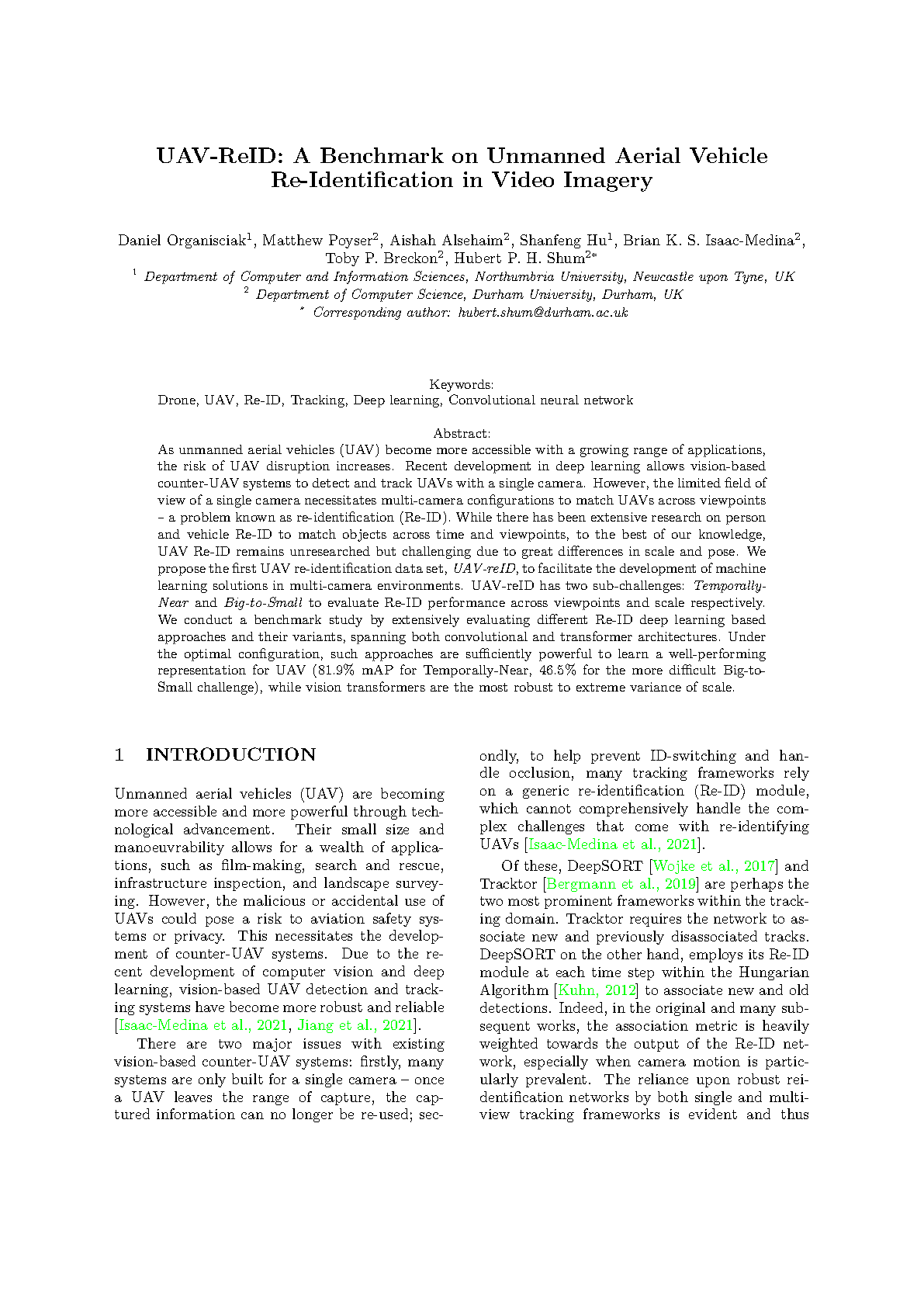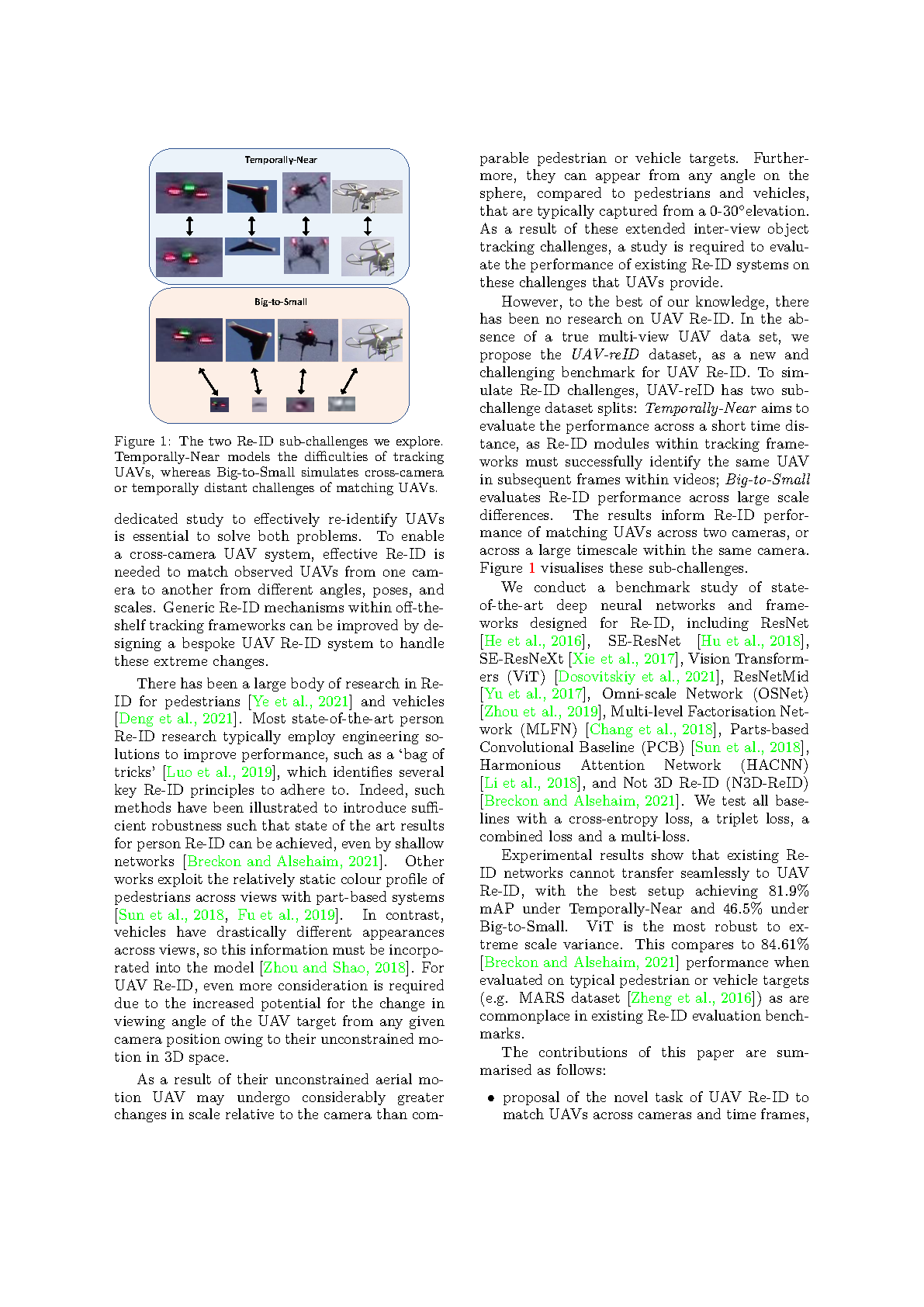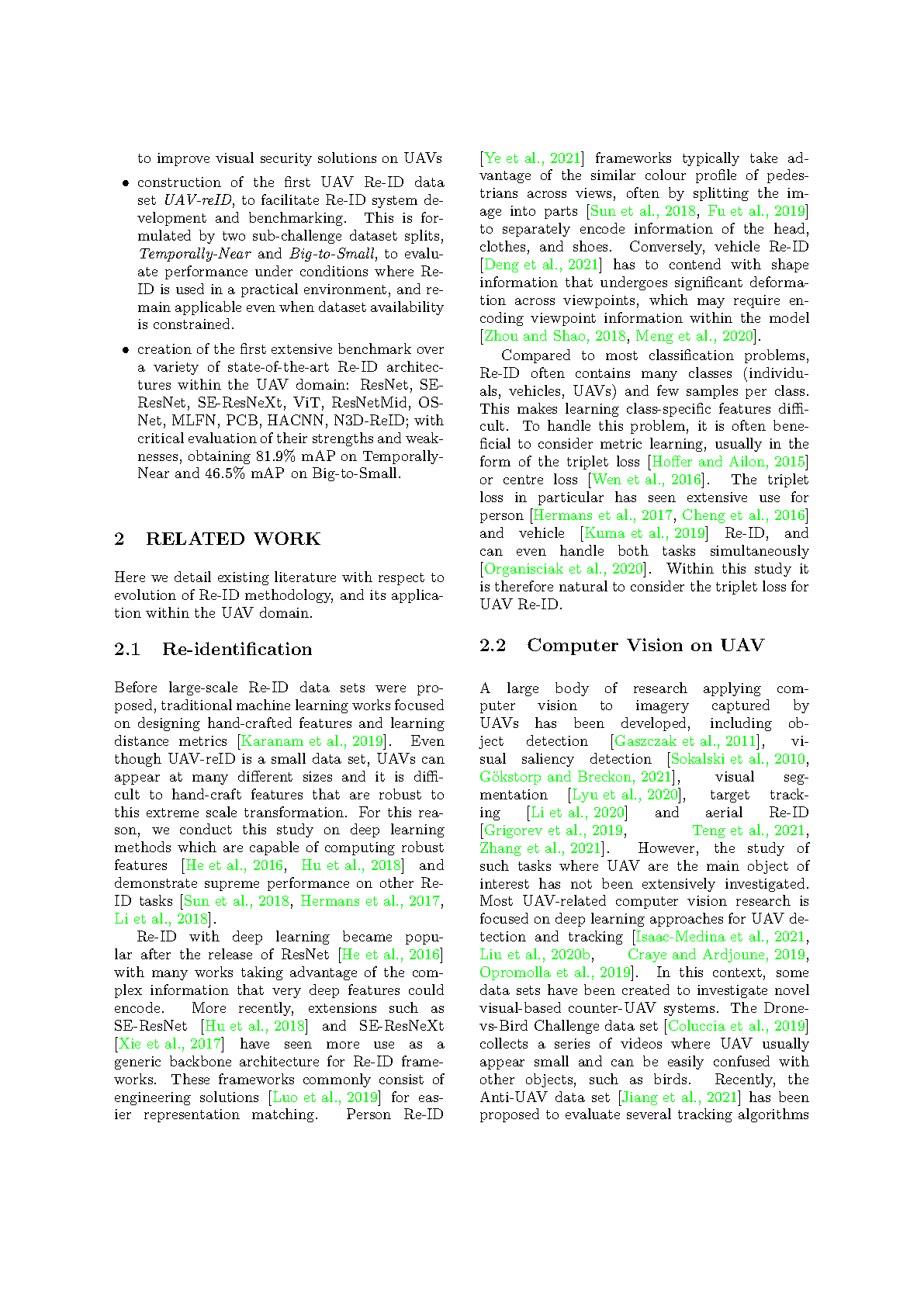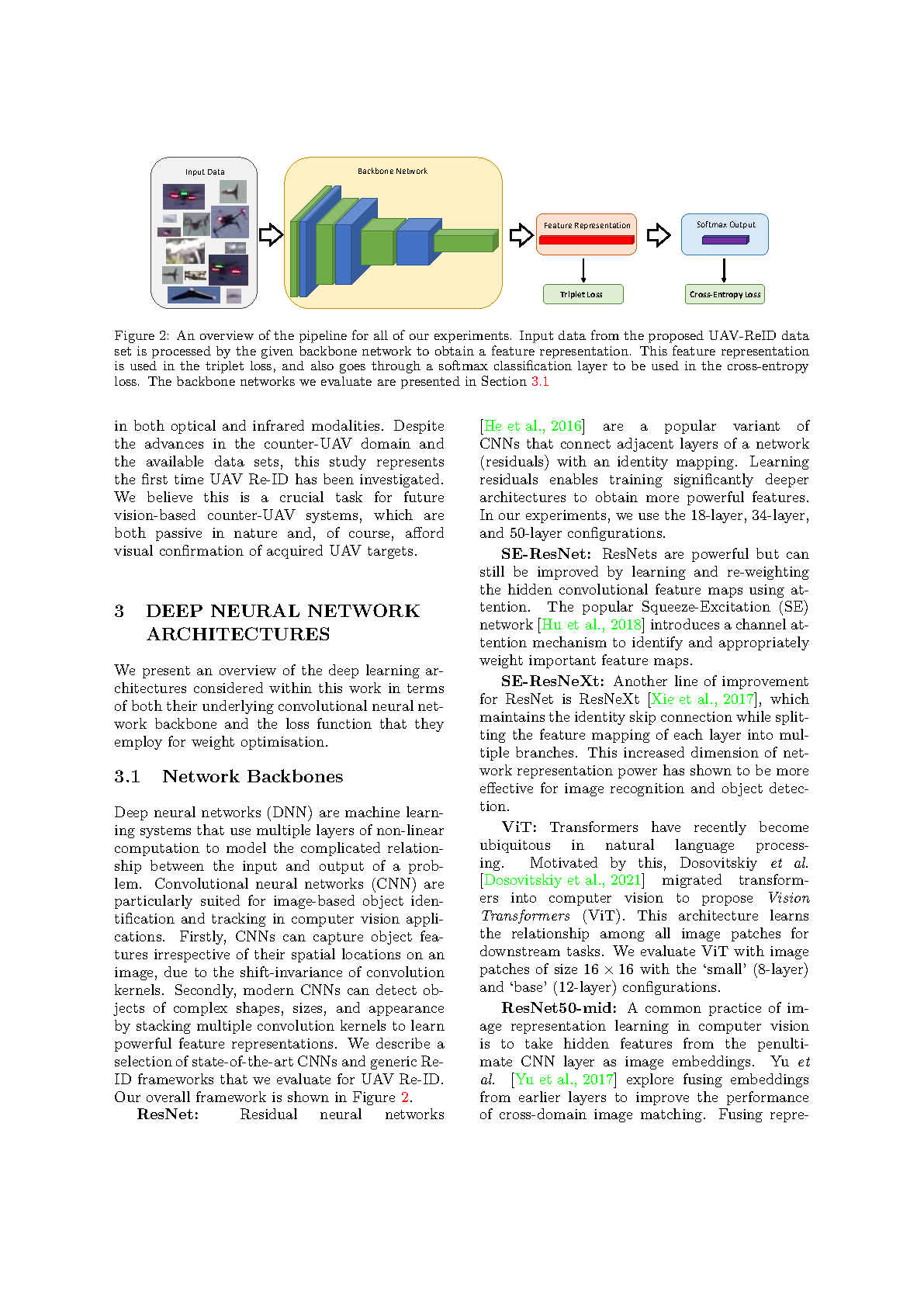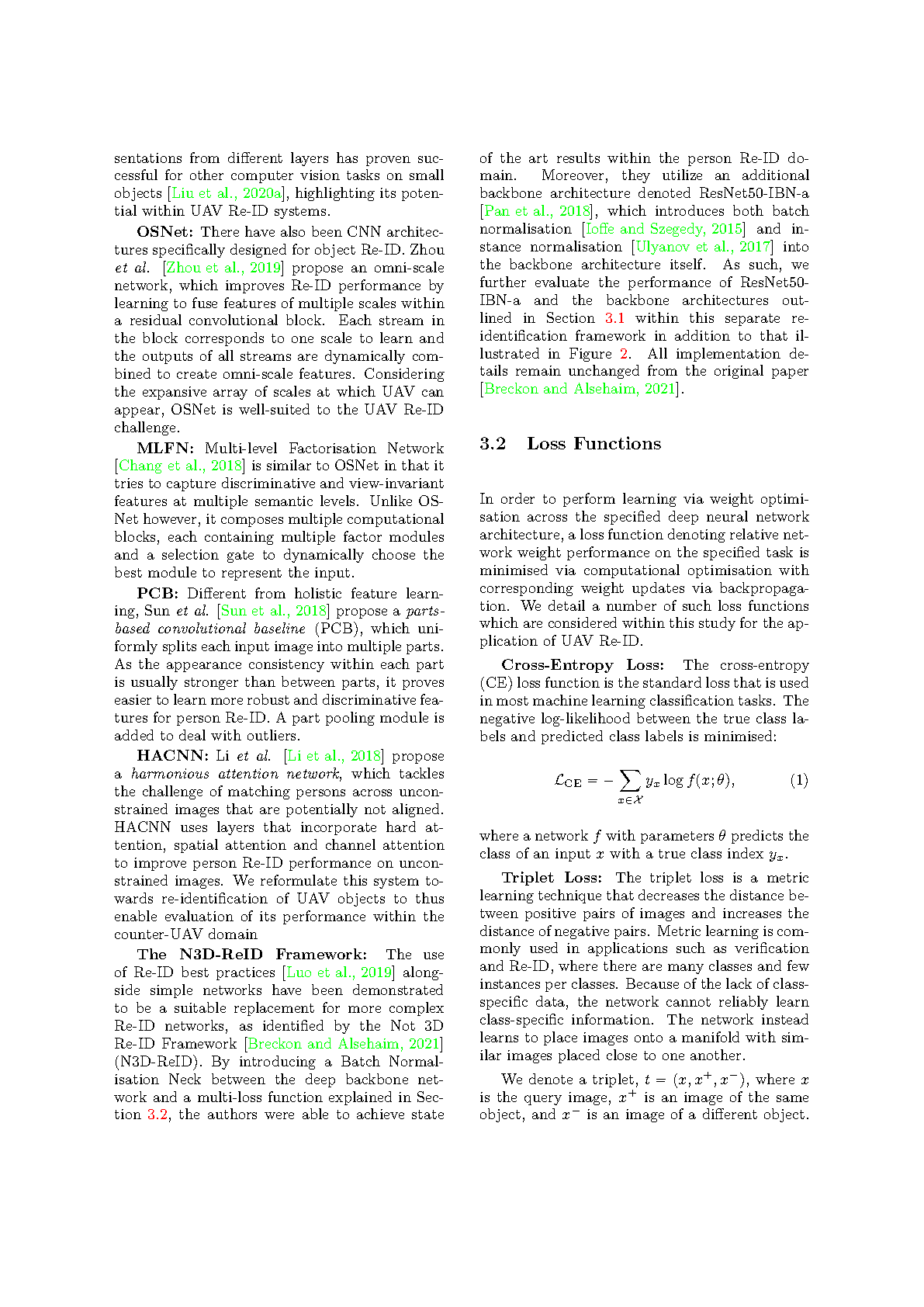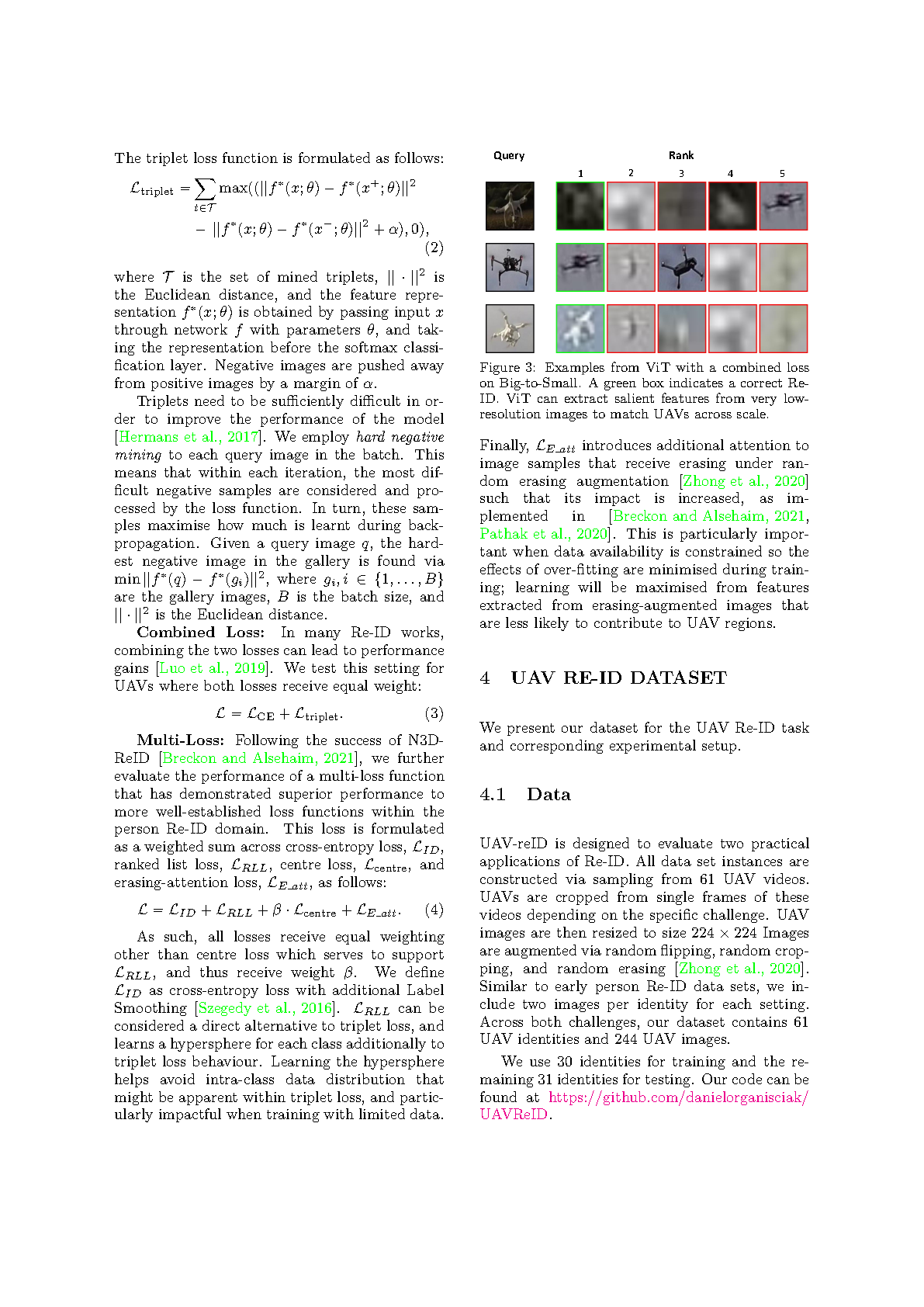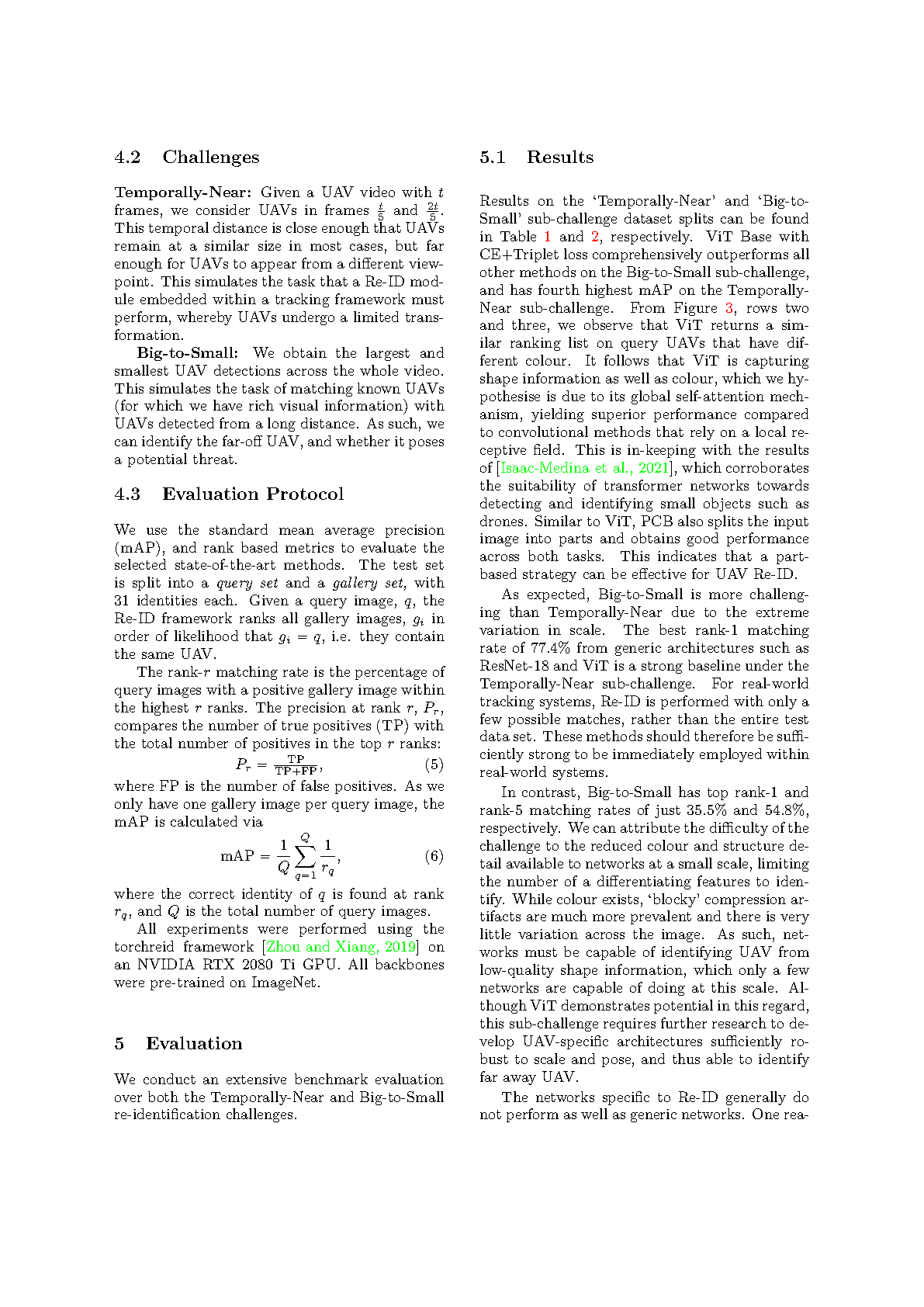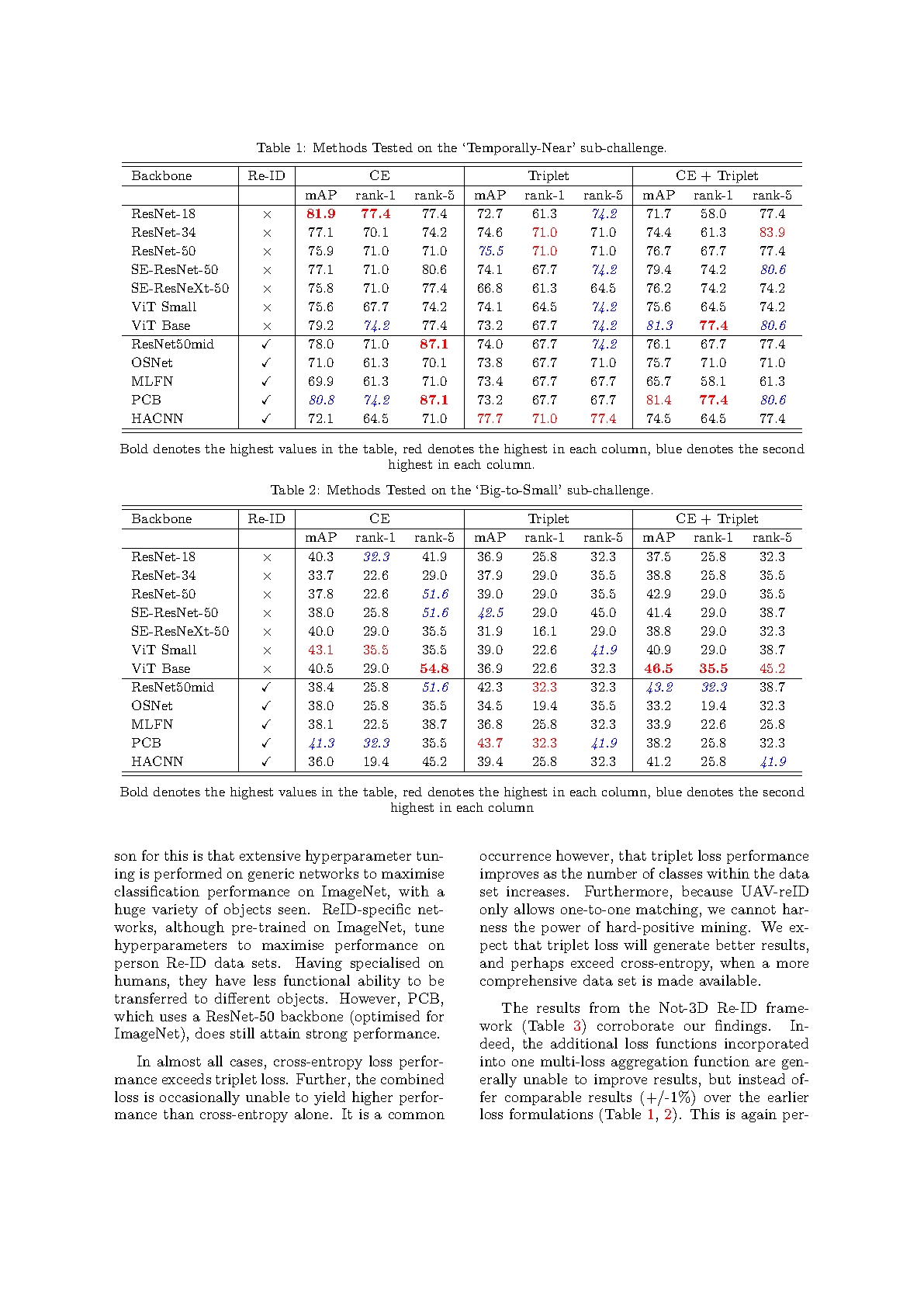UAV-ReID: A Benchmark on Unmanned Aerial Vehicle Re-identification in Video Imagery

Abstract
As unmanned aerial vehicles (UAV) become more accessible with a growing range of applications, the risk of UAV disruption increases. Recent development in deep learning allows vision-based counter-UAV systems to detect and track UAVs with a single camera. However, the limited field of view of a single camera necessitates multi-camera configurations to match UAVs across viewpoints -- a problem known as re-identification (Re-ID). While there has been extensive research on person and vehicle Re-ID to match objects across time and viewpoints, to the best of our knowledge, UAV Re-ID remains unresearched but challenging due to great differences in scale and pose. We propose the first UAV re-identification data set, UAV-reID, to facilitate the development of machine learning solutions in multi-camera environments. UAV-reID has two sub-challenges: Temporally-Near and Big-to-Small to evaluate Re-ID performance across viewpoints and scale respectively. We conduct a benchmark study by extensively evaluating different Re-ID deep learning based approaches and their variants, spanning both convolutional and transformer architectures. Under the optimal configuration, such approaches are sufficiently powerful to learn a well-performing representation for UAV (81.9% mAP for Temporally-Near, 46.5% for the more difficult Big-to-Small challenge), while vision transformers are the most robust to extreme variance of scale.
Publication
UAV-ReID: A Benchmark on Unmanned Aerial Vehicle Re-identification in Video Imagery by Abril Corona-Figueroa, Jonathan Frawley, Sam Bond-Taylor, Sarath Bethapudi, Hubert P. H. Shum and Chris G. Willcocks in 2024
Proceedings of the 2022 International Conference on Computer Vision Theory and Applications (VISAPP)
Links and Downloads
